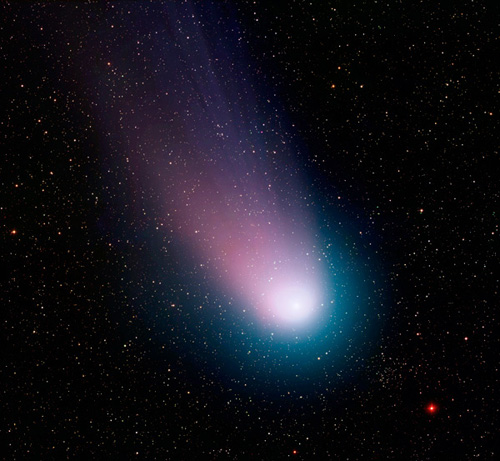 |
COMET C/2001 Q4 (NEAT)160 light-seconds Comets come from the cold outer reaches of the solar system. Like 'dirty snowballs', they are made of ice, dust and organic compounds. When they venture close to the Sun, this evaporates and forms a long, graceful tail. This comet was discovered by the Near-Earth Asteroid Tracking (NEAT) programme in 2001 and made its closest approach to Earth in May 2004, when this image was captured by the WIYN telescope in Arizona. Credit: Image made in visible light by T. Rector ( U. Alaska Anchorage), Z. Levay and L. Frattare (STScI) for NOAO / AURA / NSF. |

